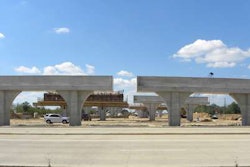 Kirk Landers [email protected]
Kirk Landers [email protected]Last summer, I was shocked to receive an email blast from the Illinois Public Interest Research Group (PIRG) urging the state to quit spending on highway expansion projects and invest that money instead in public transportation.
The rationale for this campaign was PIRG’s finding that vehicle miles travelled (VMT) per lane mile have been flat since 2004, and the group’s assertion was that this signals a permanent change in driving habits that dictates against any further expansion of the system.
In an email exchange with an Illinois PIRG executive, I suggested their conclusions were poorly drawn, that VMT data has been heavily impacted by the Great Recession, that congestion remains a problem in the Chicago metro area and that while public transportation is an important benefit to offer citizens in high-population-density areas, it is not financially self-sustaining and typically provides little or no relief for highway gridlock.
In the end, the group was primarily opposed to the construction of a specific new expressway, which is a different subject than a blanket condemnation of lane expansion.
Several interesting things came from this exchange, starting with the fact that vehicle miles travelled per lane mile really have been flat between 2004 and 2012 (the latest date for which I could find data). I personally think this has nothing to do with a sea change in driving habits and everything to do with things like the recession, the crackdown on illegal immigrants in the 2000s and lane expansions financed by the Obama administration’s economic stimulus packages starting in 2009. In any event, the VMT data from 2004 to present is not especially significant in the struggle to maintain the structural integrity of our roads and bridges, or to manage capacity in a rational manner. The simple truth is, our investment in highway capacity and condition has not kept pace with usage since 1997, the last increase in the fuel tax revenues for the Highway Trust Fund.
While there have been persuasive studies suggesting that high-population-density regions like Chicago cannot build their way out of gridlock, placing a blind, blanket ban on Interstate and freeway construction is a dangerous policy and an invitation to some future pendulum swing in the other direction. The reasons for building new Interstate miles are not limited to relieving traffic congestion. For example, a former Indiana governor proposed constructing an east-west toll way to connect small cities and towns in central Indiana and Illinois more efficiently to the nation’s Interstate commerce. His concept was that the tollway would give these towns and cities opportunities for economic expansion, and perhaps reduce the cost of getting agricultural products to market.
I don’t know if the concept was valid or what social and environmental ramifications might follow the construction of such a roadway, but if our governments simply ban system expansions, we never get to evaluate the possibilities of such an investment and we consign cities and towns and counties not currently tied to the Interstate system a future where that’s no longer possible.












